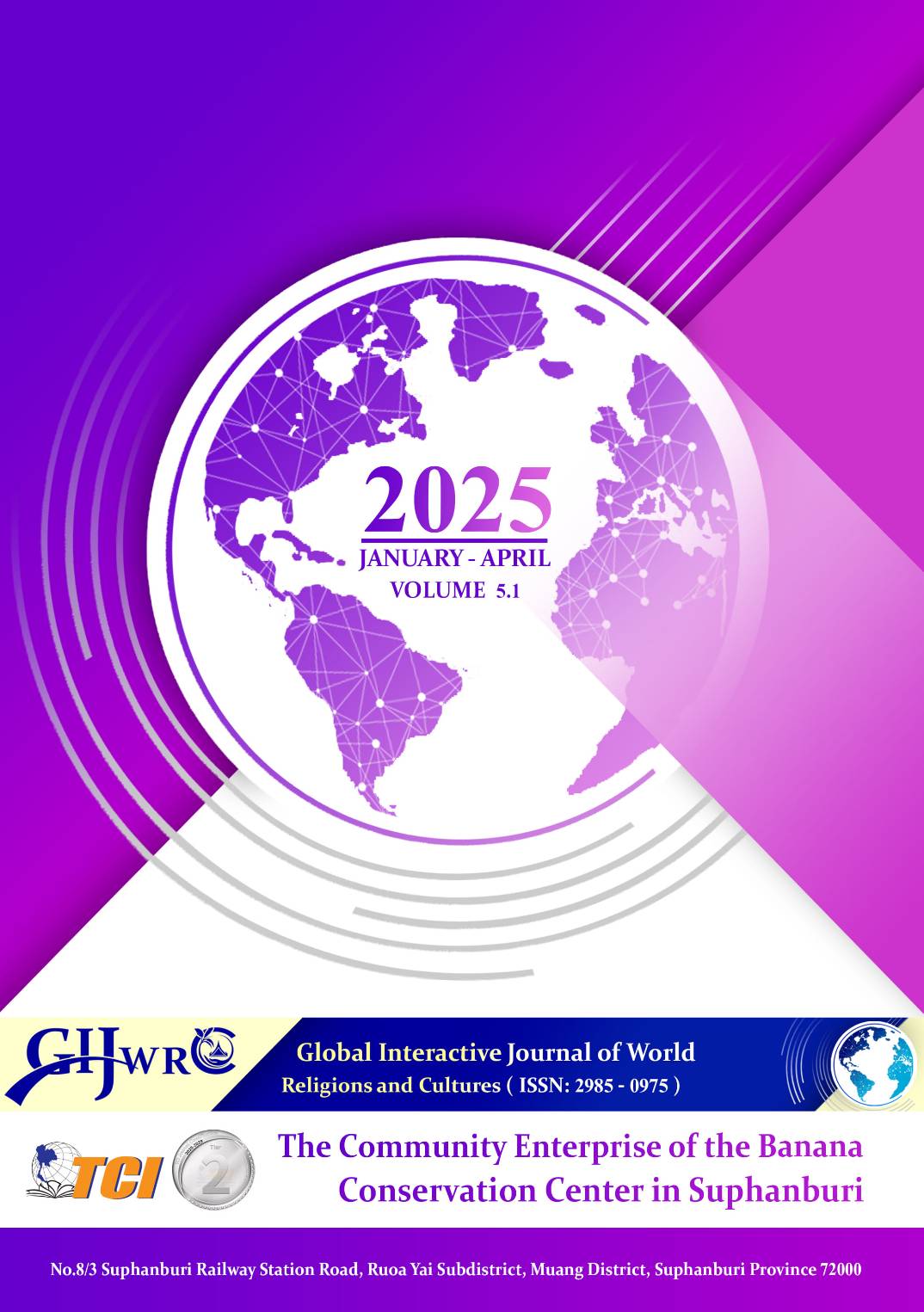WRITING A PIANO GUIDEBOOK FOR THE MUSIC CLUB MEMBER IN SANSHIJIAZI CENTRAL PRIMARY SCHOOL, LIAONING PROVINCE, CHINA
Main Article Content
บทคัดย่อ
Chinese culture places a strong emphasis on education, discipline, and artistic expression, particularly in the realm of music. Traditional beliefs highlight the importance of perseverance, structured learning, and cultural preservation, all of which play a vital role in shaping music education. In rural areas, such as Sanshijiazi Central Primary School in Lingyuan City, Liaoning Province, piano education faces unique challenges, including limited resources and the need for tailored teaching methods that align with students' learning environments. This study aims to enhance rural piano education by analyzing existing teaching methods, developing a structured piano guidebook, and verifying its effectiveness through expert evaluation. A qualitative research methodology was employed, including document analysis, in-depth interviews with experts, and data examination for constructing and validating the guidebook. Key informants were selected based on their extensive experience in piano education, holding at least a Master's degree in the field. The guidebook was designed as an 8-week structured curriculum, incorporating fundamental piano techniques, culturally relevant repertoire, and performance assessments to support students' learning progress. Expert evaluation results showed an average score of 0.95, indicating the guidebook’s high quality and effectiveness, with only minor areas for improvement. The findings of this study contribute to the development of rural piano education by providing a structured, culturally relevant teaching resource. By integrating traditional Chinese educational values with modern pedagogical approaches, this research offers a model for improving piano instruction in similar educational settings, ensuring both cultural preservation and skill development in young learners.
Article Details
เอกสารอ้างอิง
Bauer, W. I. (2014). Music learning today: Digital pedagogy for creating, performing, and responding to music. Oxford University Press.
Chen, X. (2021). Music education in rural China: Challenges and opportunities. Journal of Educational Development, 45(3), pp. 234-245.
Deng, L. (2019). Professional development for rural music teachers in China. Music Education Research, 21(2), pp. 187-203.
Duke, R. A. (2019). Intelligent music teaching: Essays on the core principles of effective instruction. Learning and Behavior Resources.
Gay, G. (2018). Culturally responsive teaching: Theory, research, and practice (3rd ed.). Teachers College Press.
Green, L. (2002). How popular musicians learn: A way ahead for music education. Ashgate Publishing.
Hallam, S. (2001). The development of metacognition in musicians: Implications for education. British Journal of Music Education, 18(1), pp. 27-39.
Li, H. (2022). Policy reforms in Chinese arts education: Implications for music education in primary schools. Arts Education Policy Review, 123(1), pp. 45-57.
Liu, Y. (2021). Promoting equitable access to arts education in rural China. International Journal of Education, 67(2), pp. 189-203.
Wang, M. (2022). Bridging the urban-rural divide in Chinese education: A focus on arts programs. Education and Society, 54(4), 321-338.
Wiggins, J. (2007). Compositional process in music. In L. Bresler (Ed.), International Handbook of Research in Arts Education, Springer. pp. 453-470.
Zhao, Q. (2020). Developing music curriculum for rural primary schools in China. Curriculum Studies Journal, 52(3), pp. 310-325.


